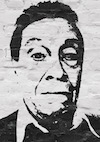 [The noted critic and novelist John Berger died on January 2, 2017, at his home in Paris. (Click here for his New York Times obituary.) Since we have entered the era of “deskilled art,” with deskilled criticism hot on its heels, we won’t likely see his equal again.
[The noted critic and novelist John Berger died on January 2, 2017, at his home in Paris. (Click here for his New York Times obituary.) Since we have entered the era of “deskilled art,” with deskilled criticism hot on its heels, we won’t likely see his equal again.
Deeply influenced by Walter Benjamin’s thoughts on photography, Berger applied them to what I consider one of the most important experiments in criticism of the twentieth century: the four-part BBC-TV series Ways of Seeing (1972). Most people know this project from its accompanying book, but I think the film series even more important, and encourage you to sample it here; you’ll find the other parts on YouTube also. (Inexplicably, no one has issued it on DVD.)
Once you get past Berger’s Robin Gibb haircut and that awful disco shirt, you’ll encounter a first-rate critical mind using the mass medium of television in an unprecedented way to explore and explain complex ideas in clear, unjargonized, accessible language — a skill I strive toward myself, and an approach I wish more of my colleagues would adopt.
I’m also an admirer of several of Berger’s books, especially A Seventh Man (1975), produced with his frequent collaborator, the Swiss photographer Jean Mohr. Recent crises in the Middle East and Europe have made this project on the subject of migrant labor newly relevant and resonant.
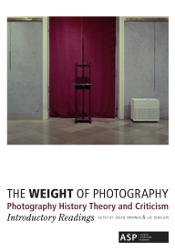 But not all of Berger’s writings on photography have equal value. And what more appropriate way to celebrate a critic’s work than by engaging with it critically? In the essay below I cast a skeptical eye on a piece of Berger’s from 1996, taking my cue from Berger’s assessment of another critic’s prose in Ways of Seeing: “This is mystification.”
But not all of Berger’s writings on photography have equal value. And what more appropriate way to celebrate a critic’s work than by engaging with it critically? In the essay below I cast a skeptical eye on a piece of Berger’s from 1996, taking my cue from Berger’s assessment of another critic’s prose in Ways of Seeing: “This is mystification.”
The following is a self-contained extract from a longer essay of mine, “Counting the Teeth: Photography for Philosophers,” originally commissioned for The Weight of Photography: Photography History Theory and Criticism, Introductory Readings, edited by Johan Swinnen and Luc Deneulin (Brussels: ASP/Academic & Scientific Publishers, 2010). You can download a pdf of the complete essay here. This excerpt first appeared in the April/May 2012 issue of Hotshoe, from the U.K. — A. D. C.]
•
John Berger Goes to the Dogs
Both out of interest and as a professional necessity I engage with my colleagues in criticism ― especially those who write about photography and/or “photo-based art” by “artists using photography.” Since such activity has virtually taken over the contemporary art world, most art critics nowadays have to grapple with photography willy-nilly, and their visible discomfort with it much resembles that of philosophers forced to the same challenge. Though in general I respect their insights into other forms of art, almost without exception they turn inexplicably simplistic and literal-minded whenever they discuss photography, apparently unable to address anything save the literal subject matter of the photographs in question ― roughly equivalent to assessing a Cézanne still life on the basis of your attitudes toward fruit.
So I come to the project of others’ philosophizing about photography with an outsider’s perspective and a critic’s predilection: that is, with the goal of putting that project in crisis, by finding ways to perturb the philosophers’ frequently ill-informed assumptions and mindless consensus. In short, I’m inclined to make trouble, and I hope to achieve that here.
In reading those of my colleagues who tend to wax philosophic, I consider it always useful to keep in mind that Aristotle’s reasoning led him to conclude that adult women had fewer teeth than adult men, and that his hermeneutics never required him to test this hypothesis by looking into a human female’s mouth and counting. I also think it helpful to ask myself the significant question articulated by the American pragmatist philosopher William James: What is the experiential life return of holding (and living by) this or that belief? And, like the U.S. poet William Carlos Williams, I find myself drawn to operate according to the proposition “No ideas but in things ” ― in other words, I choose to work under the assumption that, once I have enunciated my hypothesis, I’m obligated to look into a woman’s mouth and count.
Which brings us to the unbearable lightness of seeing. John Berger has written, “What we habitually see confirms us. Yet it can happen, suddenly, unexpectedly, and most frequently in the half-light of glimpses, that we catch sight of another visible order which intersects with ours and has nothing to do with it.” This statement comes from a gentle, affectionate meditation on the work of the Finnish photographer Pentti Sammallahti, an elegant little appreciation in which Berger considers at length the dogs who appear as protagonists in so many of Sammallahti’s images ― always, miraculously, in exactly the right place at the right time. (To read this essay by Berger, “Dog Days,” click here. It appeared originally in Pentti Sammallahti’s 1996 portfolio The Russian Way, Opus 31.) Berger proposes that “It was probably a dog that led Sammallahti to the moment and place for taking each picture.”
As it happens, I can speak with some authority here and say that Berger is precisely wrong on that score. Perhaps the following anecdote will help to explain what one can learn about photography when one deigns to speak about it with actual practicing photographers, and how that’s useful to critics (conceivably to philosophers too).
Having visited the Nordic countries often, I’d known and respected Sammallahti’s photographs for some years ― and of course I’d noticed those dogs: chance does favor the prepared mind (and eye), but nobody gets that lucky that often. When I finally met this photographer for the first time at Houston FotoFest in spring 2000, he was one of the discoveries of that Texas biennial festival, besieged by new admirers. However, at his opening in a downtown warehouse we found a moment to chat quietly just between ourselves.
I may have spent more time speaking with more photographers than Berger has, or may have a less imaginative and poetical nature than he. Possibly I’m not so philosophically inclined, or merely more suspicious, because after exchanging a few pleasantries I asked bluntly, “How do you manage the dogs?”
Sammallahti gave me a slow, sidelong, evaluative glance, decided I merited a straight answer, lowered his voice, then replied, “Sardine oil.”
Turns out that Sammallahti does a lot of his photographing on long field trips, bringing along a supply of canned sardines and crackers for quick meals. The smell of sardine oil, he’s discovered, fascinates dogs; they will nose into and linger around it for some time. So this documentary photographer saves in a bottle the sardine oil left over from his snacks. Whenever he’s framed a scene in the viewfinder to his satisfaction and needs a dog in the image as an actor or a visual nexus of arrest, he pours some of the oil on the ground exactly where he wants the dog to appear in the frame and whistles up the nearest canines. Dogs ― pace Berger ― don’t necessarily lead Sammallahti to his vistas or his images; rather, at least some of the time, he entices dogs into his frames, for the purpose of ensuring their presence in his pictures.
In announcing this I take full responsibility for changing forever the reader’s perception of those pictures of Sammallahti’s, and I choose to make us all pay that price in order to put a finer point on a core conundrum:
 No photograph transcribes the actual world. Photographs ― at least of the kinds that we generally refer to when we use that word ― describe. Of those photographers who use cameras, some seek to describe in their images the ways in which the world performs itself before their eyes and lenses. Some actively evoke performances from the world. We cannot necessarily tell which is which in any given image, or even in an entire body of work.
No photograph transcribes the actual world. Photographs ― at least of the kinds that we generally refer to when we use that word ― describe. Of those photographers who use cameras, some seek to describe in their images the ways in which the world performs itself before their eyes and lenses. Some actively evoke performances from the world. We cannot necessarily tell which is which in any given image, or even in an entire body of work.
Thus the relation of the photograph to both truth and fact is slippery, and equivocal at best. Therein lies the ultimate challenge to photographer, audience member/average viewer, critic, and philosopher alike. No ideas but in things. Requiring that one look into the woman’s mouth and count her teeth represents photography’s gift to philosophy. Philosophy’s gift to photography awaits its unveiling.
•
This post supported by a donation from Charles Mintz.
•
 Special offer: If you want me to either continue pursuing a particular subject or give you a break and (for one post) write on a topic — my choice — other than the current main story, make a donation of $50 via the PayPal widget below, indicating your preference in a note accompanying your donation. I’ll credit you as that new post’s sponsor, and link to a website of your choosing. Include a note with your snail-mail address (or email it to me separately) for a free signed copy of my 1995 book Critical Focus!
Special offer: If you want me to either continue pursuing a particular subject or give you a break and (for one post) write on a topic — my choice — other than the current main story, make a donation of $50 via the PayPal widget below, indicating your preference in a note accompanying your donation. I’ll credit you as that new post’s sponsor, and link to a website of your choosing. Include a note with your snail-mail address (or email it to me separately) for a free signed copy of my 1995 book Critical Focus!
 Donate now and I’ll include a copy of The Silent Strength of Liu Xia, the catalog of the 2012-13 touring exhibition of photos by the dissident Chinese photographer, artist, and poet, currently in her sixth year of extralegal house arrest in Beijing. The only publication of her photographic work, it includes all 26 images in the exhibition, plus another 14 from the same series, along with essays by Guy Sorman, Andrew Nathan, and Cui Weiping, professor at the Beijing Film Academy.
Donate now and I’ll include a copy of The Silent Strength of Liu Xia, the catalog of the 2012-13 touring exhibition of photos by the dissident Chinese photographer, artist, and poet, currently in her sixth year of extralegal house arrest in Beijing. The only publication of her photographic work, it includes all 26 images in the exhibition, plus another 14 from the same series, along with essays by Guy Sorman, Andrew Nathan, and Cui Weiping, professor at the Beijing Film Academy.


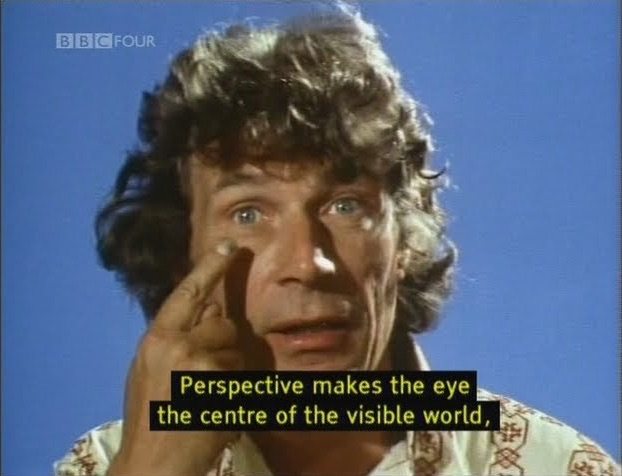


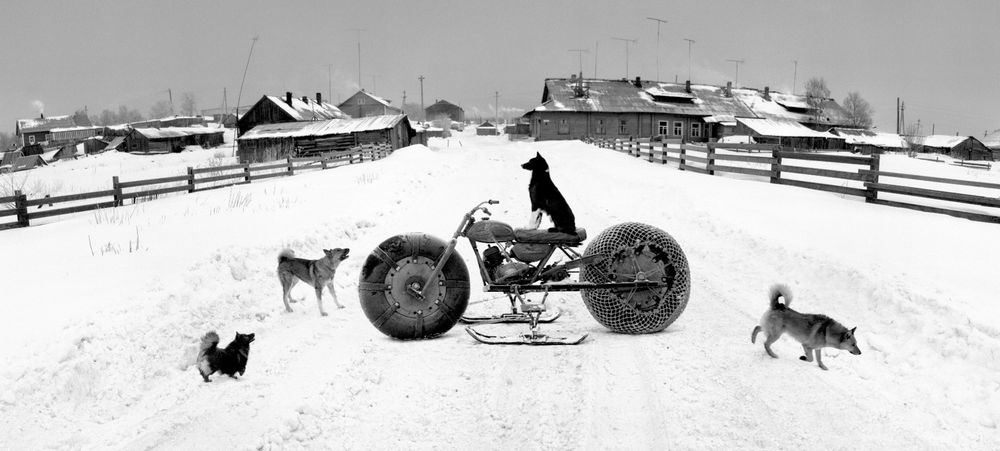
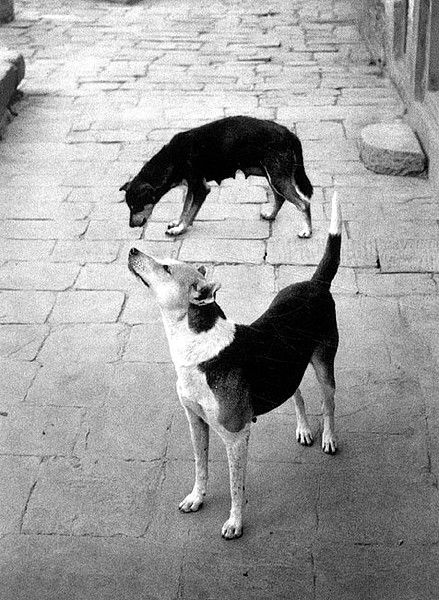




wow you introduce Berger by his fashion sense in the 70s? unbelievable, you gonna slag off monets beard next?
As a rule, I don’t allow cowards who hide behind fake names and fake email addresses to post comments here, but I thought I’d make an exception in this case.
I leave it to readers to decide whether I have “introduce[d] Berger by his fashion sense in the 70s” here. My editor’s note to this post praises him and his BBC “Ways of Seeing” series highly.
I mention his hair style and shirt because I have used this series in teaching situations where the students’ immediate first response to his appearance is dependably incredulous laughter. That has nothing to do with his facial features and expressions, nor with what he has to say, which should be the focus of their attention. It’s because nowadays (if not at the time) the sight of a 48-year-old man garbed and coiffed like a hippie has an inherently clownish aspect, in addition to making the film feel unfortunately outdated.
So I have found it necessary to tell students and other viewers to concentrate on the content of Berger’s argument and disregard the costume.
Aside from the embarrassing middle-aged-man-dressing-like-a-teenager aspect of Berger’s self-presentation here, there’s an obvious unawareness of the fact that wearing a loud-patterned shirt in a film in which one is starring inevitably draws the viewer’s visual attention to said shirt, away from one’s face and whatever objects and images get shown and discussed in the film. This demonstrates a basic ignorance of elementary issues of visual perception in relation to mass media — the very subject of this series, in which Berger presents himself (and the BBC presents him) as an expert. Neither Berger nor his producer can have intended this undercutting of their message and their credibility.
So I bring up the matter of Berger’s outfit and coiffure preemptively, in order to get viewers past those superficial yet distracting elements of this BBC project, precisely so that, as I put it immediately after that mention thereof, they can “encounter a first-rate critical mind using the mass medium of television in an unprecedented way to explore and explain complex ideas in clear, unjargonized, accessible language.”
If that offends some nameless wanker from Birmingham, England, so be it.
The mode of dress was prevalent in mainstream British media personalities of the era, pandering to the up and coming boomer cohort, who tended to dismiss out of hand curmudgeons who presented as old fogeys. I don’t think it occurred to many at the time this mode would come to be regarded with disdain by future generations? Think kindly of present-day old fogeys sporting skinny jeans and clown shoes!
As a pre-boomer generation war baby (born 1943) who wore clothes in the years 1965-75 that I wouldn’t be caught dead in today and had long hair to boot, I don’t mean my description of Berger’s shirt in an ageist way, or otherwise derisively. Its strong, bright pattern makes it visually distracting; it pulls the eye away from Berger’s face in the close-ups and studio scenes, and away from both his face and the artworks he’s talking about in the staged “museum” scenes.
That’s just not visually savvy. And it’s especially problematic as a recurrent phenomenon in an educational series titled “Ways of Seeing” that seeks to encourage close, critical readings of visual images — because it undercuts the credibility of Berger as narrator, indicating an obliviousness to the effect of his own visual self-presentation.
You are right and I found the same student reaction using Berger’s videos. It’s a fairly common phenomenom with videos from that era and many of those recorded for the UK’s Open University sport long-haired lecturers in flared trousers and aroused similar responses from later students.
The book suffers from the small size of its reproductions and at least in my copy that they are black and white.
Incidentally I also found Sonntag far more convincing on TV about ‘On Photography’, than in the book where almost every sentence had me saying ‘Yes, but…’ and some pages of my copy have more pencilled comments than printed text.
And as for the dogs, I got the same whispered two word answer when looking at a show of his pictures in Paris Photo some years ago.
Good to hear from you, Peter. Thanks for chiming in here — and for your ongoing support of the Capa D-Day Project at your blog Re-photo.
I’m certainly not suggesting that Berger should have worn a suit and tie, or that the other older figures to whom you refer should have dressed more formally. Casual isn’t the problem. In Berger’s case, a simple one-color shirt would have made a world of difference. When I taught at New York University (1977-93) I used both the book and the film/video versions of “Ways of Seeing” in my classes, and inevitably had to get the students to move past Berger’s sartorial choice to the substance of what he was saying. Not a strategically savvy wardrobe decision.
The book version is/was a companion piece to the video series, intended as an inexpensive teaching tool and widely used even till today for exactly that reason. As such it works just fine. It’s not a picture book. Printing the pictures larger, and/or on coated stock, and/or in color would all cost more in production and mandate increasing the cover price.
Pleased also to have your confirmation that Pentti Sammallahti told you that he used sardine oil to attract and keep dogs around in some of the situations he photographed. Makes my account a bit more than apocryphal.